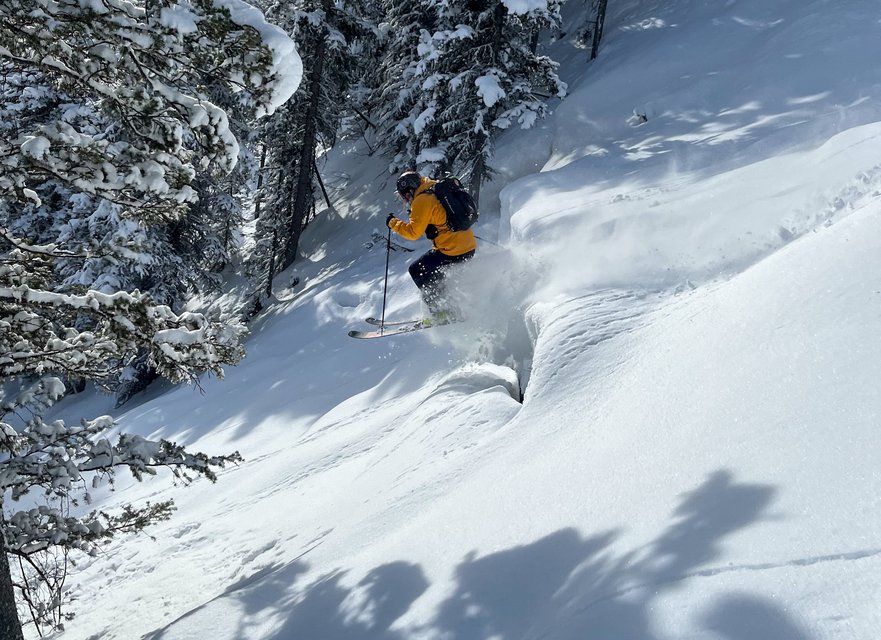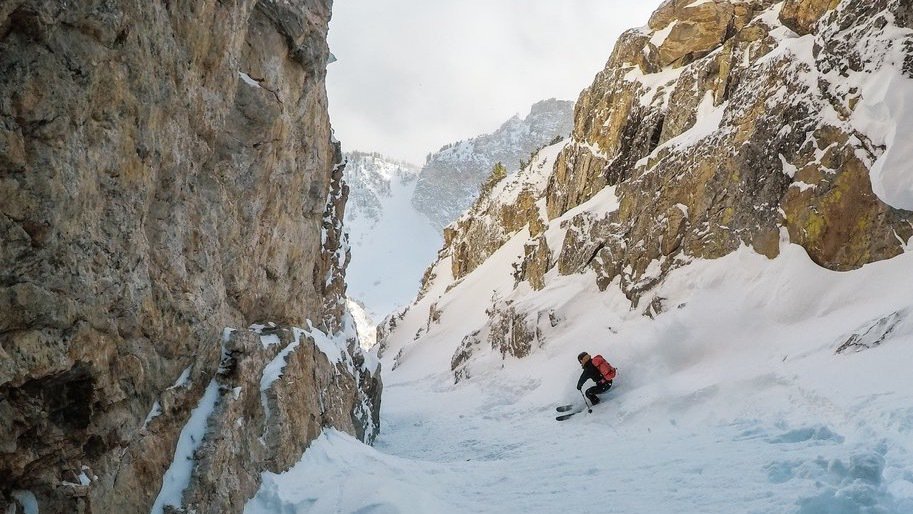This season, in the greater Teton backcountry skiing community there has been a fair bit of discourse about communication. Some of that came to a head in the Sliver Couloir in late January, and that incident has gotten a lot of press. This situation is symptomatic of a greater challenge that anyone who backcountry skis in a popular area faces. More people are skiing bigger lines than ever before. And having other backcountry travelers above or below you adds another layer of risk to an already risky pursuit. So, if you want to learn more about the incident in the Sliver, I highly recommend listening to this podcast from Teton County Wyoming Search and Rescue.
But I think that this is a more universal issue that deserves a bigger cultural response, and isn’t just relevant to folks in our relatively small mountain range.
While listening to that podcast, my partner pointed out that the takeaway many folks were espousing was to take the time to ask other parties in the parking lot, on the skin track or in the boot pack what they plan on skiing to minimize conflicts. But that ask is subtly, but importantly different from leading off that conversation with information about what you plan to ski, before you interrogate others about their goals. When someone asks you what you’re skiing, it automatically puts you on the defensive, not necessarily because you’re trying to hide a “stash” but because it can feel like you and your objective are being weighed and found wanting. But, if someone offers information about their goals, instead of demanding it about yours, it sets a completely different tone for the interaction.
Here’s a less dire example: today on the skin track, we were moving quickly, in a popular zone that we (and many others) ski a lot. You can see the face from the road, it’s the most obvious skin track from the second most popular parking lot on Teton Pass. It’s not a secret. So we weren’t surprised when we caught up to another group. They were moving slowly, breaking trail in a little fresh snow. We offered to take turns breaking with them. They responded that they didn’t want that because they wanted “first tracks.” They asked us what we were skiing and we told them. They didn’t say what they were going to ski.
Eventually, less than halfway to the top, they pulled over to change layers. We passed them and broke trail the rest of the way. We set up to ski the shot we’d mentioned to them, and as we transitioned at the top, they came up on us, to ski the same shot, grumbling. If they’d told us earlier what they were planning to ski, we would have moved to a different shot. But because they just asked us what we were doing, and then didn’t proffer any information about their own plans, they skied in our tracks, and we got to deal with a grumpy entitled bro breathing down our necks. Nobody was put into danger, nobody got hurt, but the subtle failure in communication hurt all of us. It was a small interaction that was very indicative of classic toxic backcountry ski culture.

Crappy communication aside, the skiing was still friggin great.
Backcountry skiing has historically had a culture of secrecy, folks like to guard their stashes, pretend that their favorite areas are “secret” and generally do their best to cosplay foreign spies hiding grave state secrets. And I totally get that desire. It’s easy to fall in love with a zone, only to find out that somebody put it on AllTrails and now it’s over-trafficked and messy.
Often we carry that secrecy too far. In a misguided effort to avoid “blowing up the spot” we refuse to have easy and important conversations with other backcountry users. And so we fail to communicate, and if we do communicate it’s often in the form of demanding to know what others are skiing so that we can find out if it affects our day. There are few things more off putting than some random dude coming up to you in a freezing predawn parking lot and interrogating you on your plans, before stalking off without letting slip a word about his own. It doesn’t foster a culture of open communication. And guides are often especially guilty of this, demanding to know what you’re doing and telling you off if they think it could affect their customers’ day in the hills.
That whole approach is asinine. All else aside, if someone is in the right parking lot for your objective, it’s not “blowing up the spot” to tell them what you’re planning on skiing. And it’s not like there are that many secrets anymore around here anyway. Mark Smiley sells a great digital map of the park, turn on “Public Tracks” in Gaia and you’ll see everywhere every guide in the region has ever taken a group. Protecting your stash by even refusing to mention its name to someone else in the parking lot is foolish and dangerous.
So here’s my suggestion: If you’ve got a big, committing line in mind, and someone else is gearing up in the parking lot at the same time as you, or headed in the same direction on the skin track, approach them, and volunteer where you’re going. “Hey, what’s up, we were going to ski Cougar Bait, what are you going for today?”
Don’t ask them what they’re doing before you tell them your own info, don’t just pass each other by with a grunt and a nod. Be the bigger person, proffer your own information, and then ask them for theirs. If they refuse to respond, that’s on them, but you’ve done your best, and set everyone up for success as much as you possibly can on your own. It’s a small thing, telling others where you’re going instead of just asking them, but it makes a big difference, and will have a positive effect on any backcountry communication.


Comments